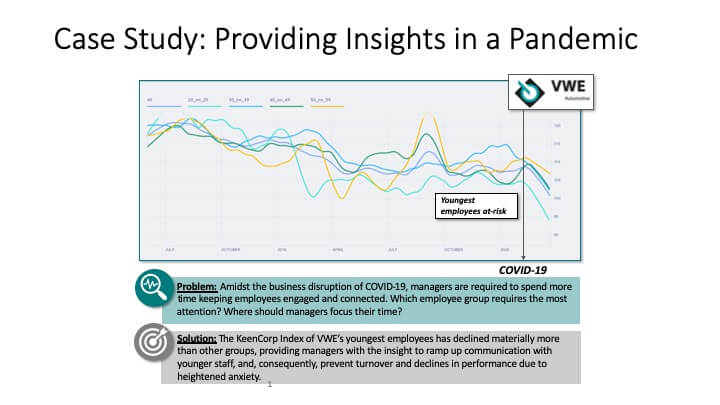The EOS Model® provides a useful foundation for businesses, but it falls short in addressing key aspects of creating an growth. By incorporating additional elements from the Gravitas 7 Attributes of Agile Growth® model, businesses can create a more comprehensive system that promotes growth while maintaining smooth operations. Focusing on Leadership, Strategy, Execution, Customer, Profit, Systems, and Talent, the 7 Attributes of Agile Growth® offer a more encompassing approach to achieving success.

Need to Escape, Flights to Nowhere!
As I have discussed several times, we are struggling in the COVID world of working more hours, with more conference calls, little time to turn off and recharge. However, breaks are more critical as we need downtime from deadlines and stress and to recharge. Burnout is becoming a large factor and causing falling productivity among all of us. We work longer but are less effective. Thus while overall productivity may be ahead, the cost is enormous.
Furthermore, with Zoom, Skype, Teams, Hangout, etc., there is a belief that since you are at home, you are always available. One executive I know has been in the Azores for a couple of weeks with his wife as she is from there. A board he is on just rescheduled its board meeting, and he is facing a board meeting from 12 am to 3 am, which in my opinion, is ridiculous. We all need to understand that many of us are no longer where we were during regular times. Some are at vacation homes, some are with elderly parents, some are stuck in other countries, and some are homeschooling kindergarteners first thing in the morning. Thus, we need to adopt a much efficient approach and ask if times are convenient for all the call’s potential members.
The assumption that everyone is available at all times so we can put meetings on their schedule at any time is causing even more chaos and exhaustion. Further, while the new time might suit the most senior member of the call, if they need input from the others who cannot provide it due to the time, then the meeting is a waste of time, and burnout increases.
I took a week’s vacation about three weeks ago and failed miserably. The best I managed was one day with only one call and four hours of work. Looking at my falling productivity, burnout, and listlessness, my wife and I agreed on a do-over. This week we took another vacation, and I have done much better with little work and meetings. I can already feel my energy levels and thinking improve. We all need a break, and like on airplanes, when the oxygen mask comes down, take care of yourself first, so you can then take care of others.
Thus, finding time to create that quiet space where you can reflect and recharge your batteries is a battle that many of us now face. Many executives say the most significant thing they miss in our new world is that time on aircraft when they were effectively out of reach and had that quiet time.
Naturally, markets responded, and some airlines, none in the U.S., are offering “Flights to Nowhere.” Thousands of people have booked flights in Brunei, Taiwan, Japan, and Australia that finish where they started and are called either “scenic flights” or “flights to nowhere.”
- Royal Brunei, since mid-August, has flown five of these flights. As Brunei has had very few coronavirus cases, passengers are not required to wear masks, but staff members are.
- EVA, the Taiwanese airline, sold all 309 seats on its Hello Kitty-themed A330 Dream jet for Father’s Day.
- Japan’s All Nippon Airways had a Hawaiian-resort-themed, 90-minute-flight with 300 people on board.
- Qantas sold out its flight to nowhere over Australia in 10 minutes last Thursday. Tickets ranged in price from $575 to $2,765. The flight will go around Australia, flying over the Northern Territory, Queensland, and New South Wales.
- Qantas has also brought back its popular sightseeing flights to Antarctica that don’t land in Antarctica but allow passengers to walk around the aircraft and have different Antarctica views.
- Starlux, the Taiwanese airline, is working to make the flight-to-nowhere experience a luxurious one by allowing people to buy packages for the flight and a hotel stay. Since August, the airline has run six flights to nowhere and has about a dozen more scheduled through October, and most of them have sold out within 10 minutes of being announced. The airline requires masks and social distancing on all fights.
For those that see flying more than as a method of getting from A to B, these flights provide either the exciting flying experience or the quiet time they have missed due to COVID. For those who need to escape being online always. I can appreciate the quiet time flying provided. I loved long-haul flights with no WiFi and considered them a great time to read and get “thought” work done. But the idea of a “flight to nowhere” has little appeal. I have my first cross country flight since March next month, and while I may change my view, I doubt it.
However, for those executives who cannot manage to find a quiet time without getting on a plane, I would suggest revisiting your priorities and finding that peaceful time once a week of at least two hours. Make sure that:
- You have blocked out the time on your calendar, so you cannot be disturbed;
- You have turned off your phone;
- If using your computer, you have turned off your email; and
- You are somewhere where you will not be disturbed by a spouse, partner, kids, or pets.
Furthermore, start considering all the others on your multitude of video calls to ensure that the times suit them and that they will be in a position to provide the most significant input. Otherwise, you are just increasing stress and burnout and doing nothing productive.
I believe quite times to be of great value, and if you can create that habit and space now, it should serve you well after COVID has ended without a need to fight your way through airports, security, and eat lousy food. I think we all would benefit from more of this time, especially as we are “busier” than ever but are questionably productive.
Copyright (c) 2020, Marc A. Borrelli
Recent Posts
EOS is just that, an Operating System
What has COVID done to Company Culture?
COVID has affected everyone. However, companies need to examine if they have lived their core values during COVID, how they are reinforcing them in a WFH environment, and especially with the onboarding of new hires.
Profit ≠ Cash Flow
Knowing how much cash you generate is essential for planning for growth. Too many companies don’t know and when they grow they find they are continually running out of cash. Understand your cash flow generation and how to improve it through improvements in your Cash Conversion Cycle and using the Power of One.
What Are Your Critical and Counter Critical Numbers?
The key to achieving long term goals is to define short term goals that lead you there. Focusing those short term goals around a key metric is essential. However, ensure that the metric will not lead other areas astray by having an appropriate counter critical metric act as a counter balance.
Rethinking ‘Family’ Culture in Business: Fostering Performance and Success
Explore the importance of company culture and the potential pitfalls of adopting a “Family” culture in organizations. Learn how to foster a high-performance culture while maintaining key family values and discover success factors for family businesses. Rethink the “Family” culture concept and create a thriving environment for your organization.
Do You Truly Know Your Core Customer?
Knowing the profit of your core customers is key to building a growth model. Many companies have identified core customers that are generating a sub-optimal profit and so they cannot realize the profits they seek. Identifying the correct core customer allows you to generate profits and often operate in “Blue Ocean.”
The Spectacular Rise and Fall of the European Super League
The European Super League (ESL) collapsed within 48 hours of its announcement due to hubris, a lack of value creation, and fan backlash. The founders’ arrogance led them to disregard European football’s deep-rooted traditions and culture. At the same time, the focus on wealthy club owners instead of merit undermined the essence of the competition. The fierce backlash from fans, who felt betrayed by their clubs, demonstrated the importance of prioritizing supporters’ interests in football.
When Should I Sell My Business?
Many business owners want to sell at the top of the market. However, market timing is tough. Is this the best strategy? Probably not.
Does Your Financial Model Drive Growth?
Working with many companies looking to grow, I am always surprised how many have not built a financial model that drives growth. I have mentioned before a financial model that drives growth? Here I am basing on Jim Collin's Profit/X, which he laid out in Good to...
COVID = Caught Inside
As we emerge from COVID, the current employment environment makes me think of a surfing concept: “Being Caught Inside When a Big Set Comes Through.” Basically, the phrase refers to when you paddle like crazy to escape the crash of one wave, only to find that the next wave in the set is even bigger—and you’re exhausted. 2020 was the first wave, leaving us tired and low. But looking forward, there are major challenges looming on the horizon as business picks up in 2021. You are already asking a lot of your employees, who are working flat out and dealing with stress until you are able to hire more. But everyone is looking for employees right now, and hiring and retention for your organization is growing more difficult.












